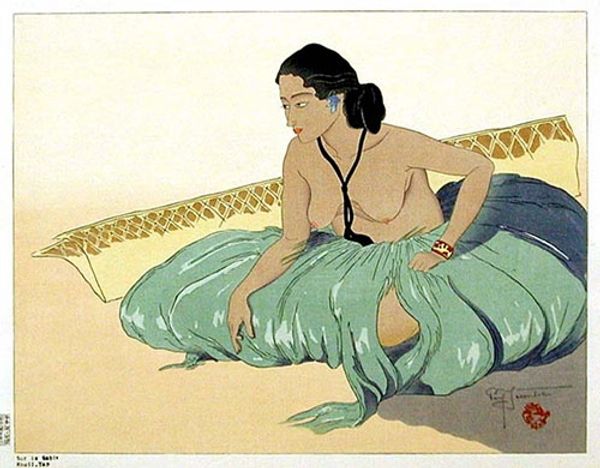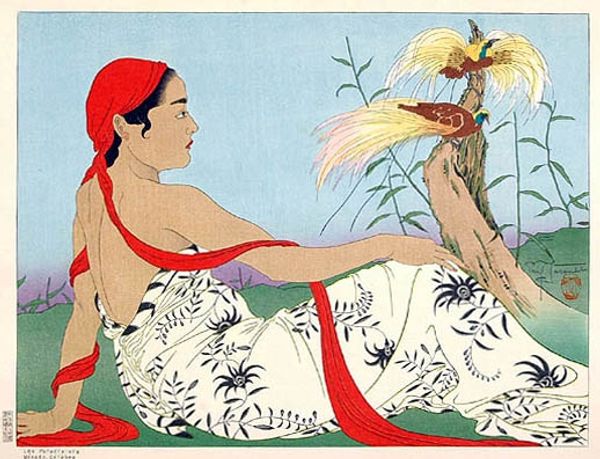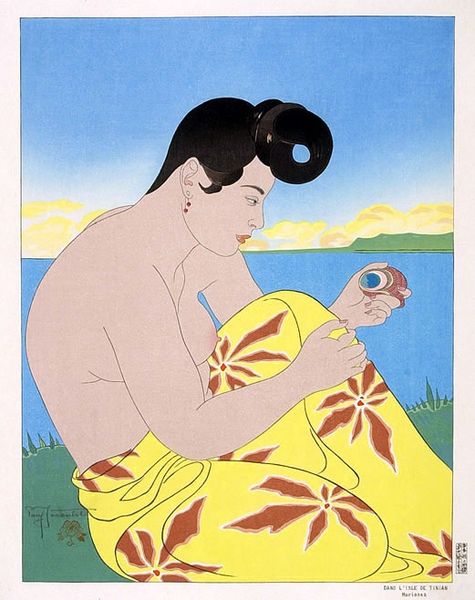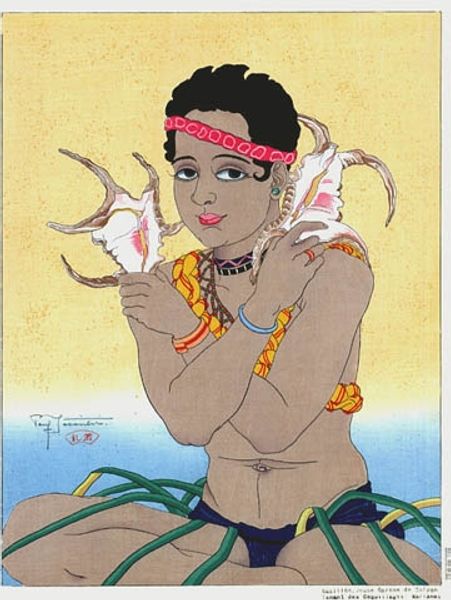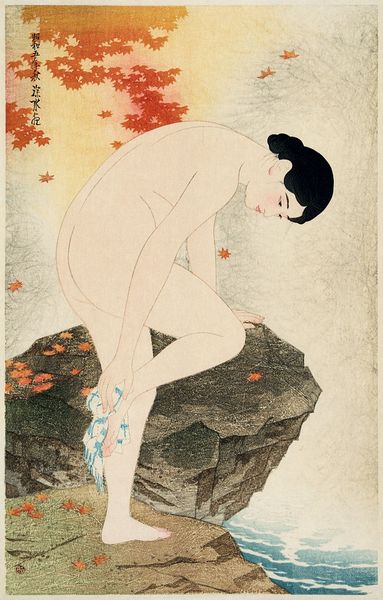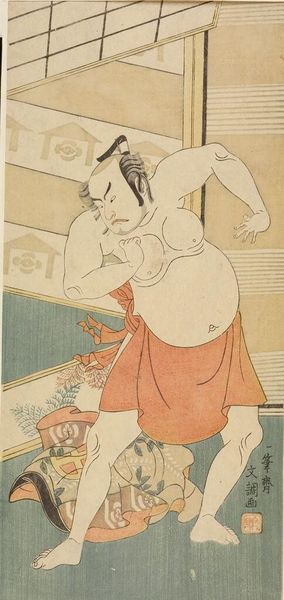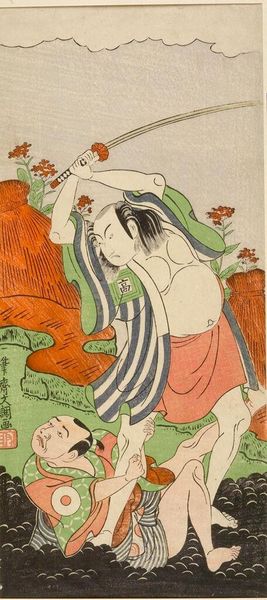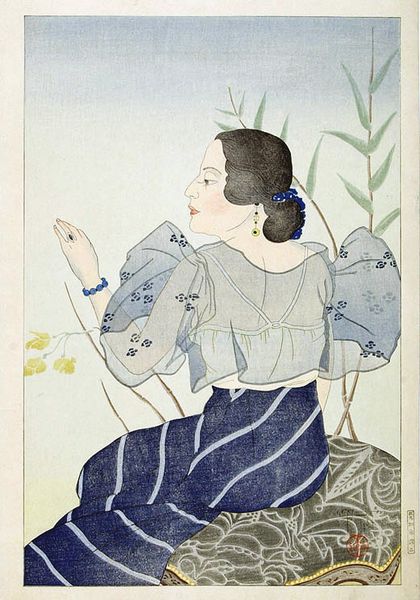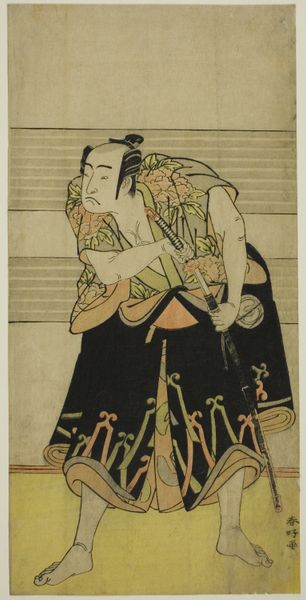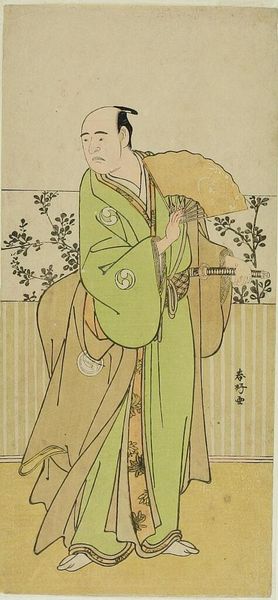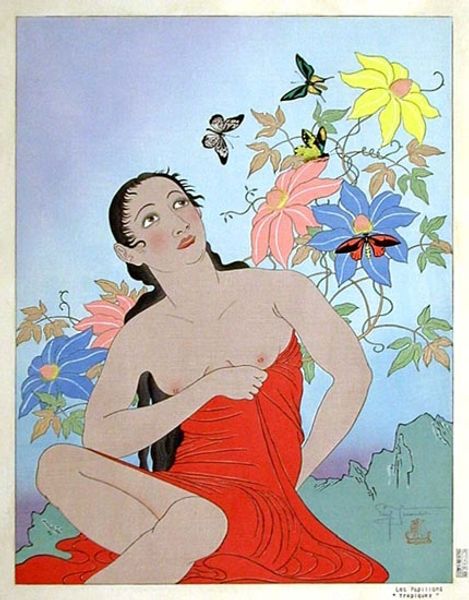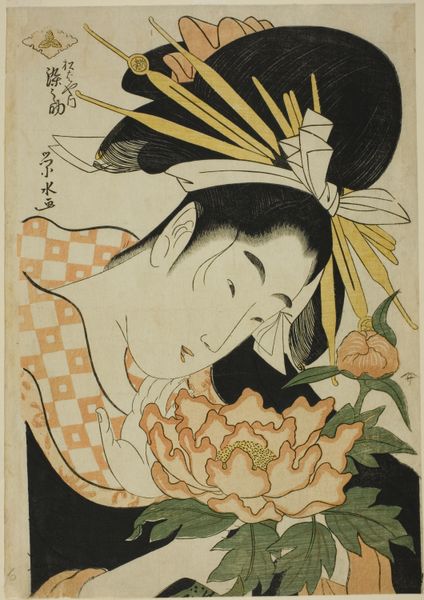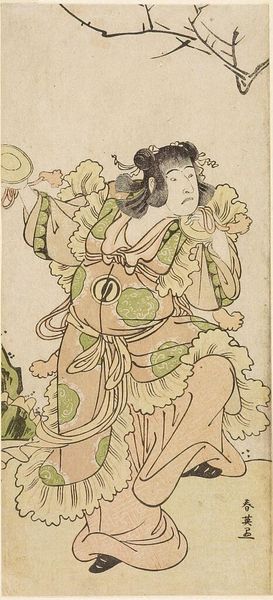
Copyright: Public domain Japan
Editor: This is "Jeune Fille De Saipan Et Fleurs D'Hibiscus. Marianes," a 1934 woodcut print by Paul Jacoulet. I'm struck by how dreamlike it feels, a mix of Asian art traditions with, well, something else. What symbolic reading might we find here? Curator: This is quite intriguing, isn't it? Jacoulet certainly plays with the visual language he encountered during his time in Asia. Notice how he depicts the young woman. Her gaze drifts off; she's adorned, yes, but her expression carries a weight. Have you considered the hibiscus? Editor: I see the hibiscus, bright yellow. Does it signify something specific in this context? Curator: Hibiscus are commonly associated with beauty, but also fleeting love, even female submission, depending on the cultural lens. Now, look at the color palette – muted, save for that brilliant bloom. Could it symbolize something desired but just out of reach? A yearning perhaps? Consider the Ukiyo-e influences - were they always straightforward depictions of reality? Editor: That makes sense. I hadn't thought about the tension between the overt beauty and that hint of sadness in her eyes. So, you’re suggesting the artist is using familiar symbols to express a more complex emotional state? Curator: Precisely! It's a layered cultural statement. This piece becomes more than just a portrait. It’s a meditation on beauty, desire, and maybe even the complicated relationship between cultures. What is your take on that blue cloth around her? Editor: It could represent the sea that isolates her, but at the same time is full of potential as a portal toward a new life, a voyage. Thanks, I see so much more now! Curator: Absolutely. It reveals much about the visual dialogue between the East and the West.
Comments
No comments
Be the first to comment and join the conversation on the ultimate creative platform.
